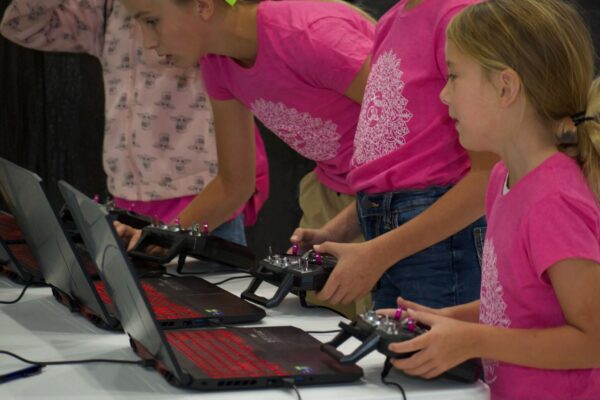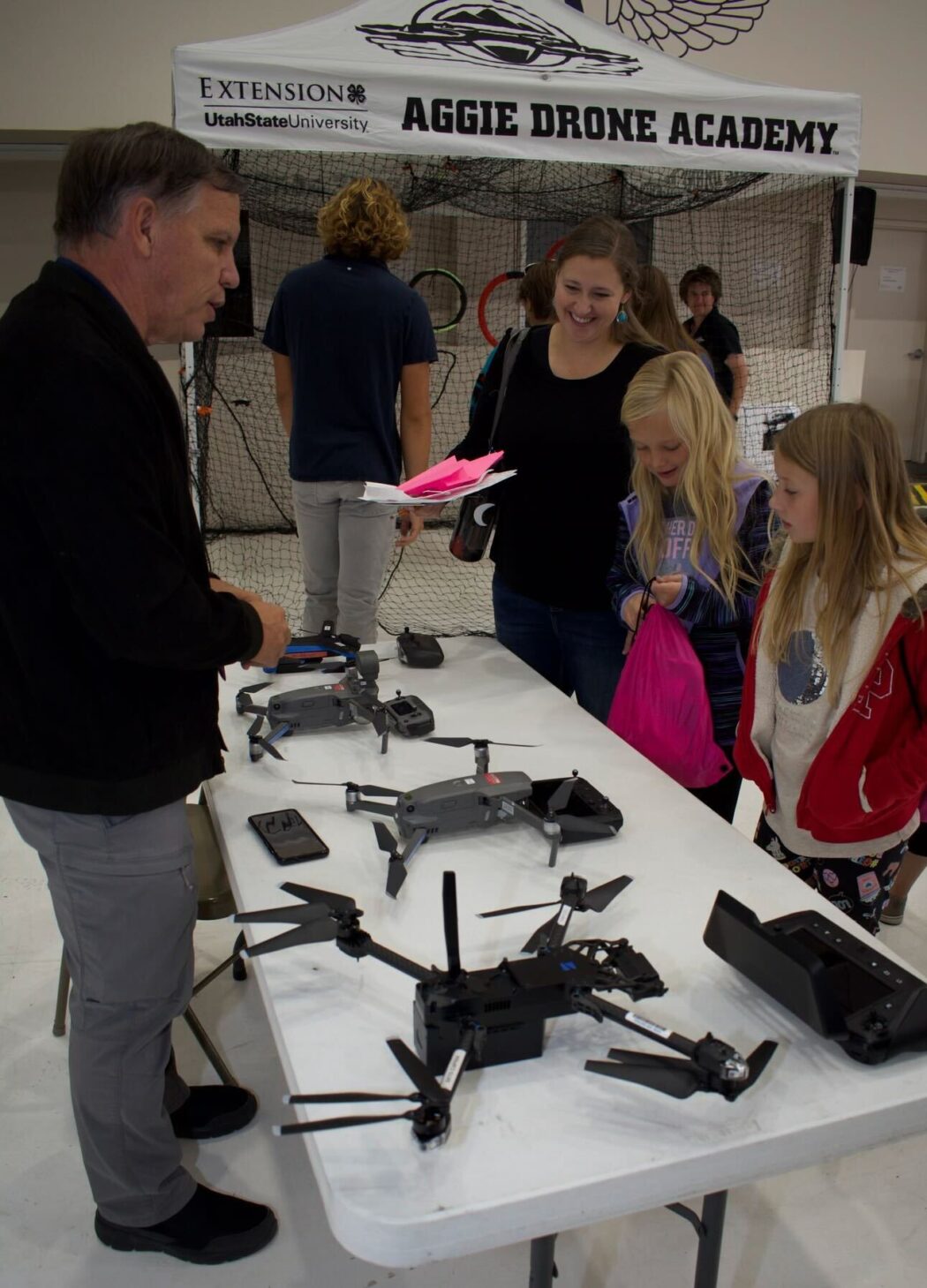Girls in Aviation Day encourages young women to take to the skies
Young girls all over the world never consider certain fulfilling and achievable career options. Not because they don’t have an interest in the field, but because they simply don’t know those options are available to them as women.
The media that surrounds girls in their daily lives seldom tells them women can be pilots, which stops them from even considering, Could I take to the sky?
USU’s Girls in Aviation Day aims to prevent this lack of exposure of female aviation to younger kids. On Sept. 9, girls ages 8-18 were welcome to participate in many activities at the Logan-Cache Airport, each of them shouting to the world that women can be and are aviators.
Activities at the event included airplane building, a drone cage, making bracelets with airplane cables, an aviation history scavenger hunt and photo-ops in a plane.
Jaelen Grove was the Girls in Aviation Day lead this year as a member of Women in Aviation, the international organization that hosts the annual event. Girls in Aviation Day is especially important to Grove because it started her journey at USU majoring in fixed-wing aviation and aviation management.
“I didn’t know what I wanted to do in the aviation world, and I didn’t really know where to start as the first pilot in my family,” Grove said. “I went to a Girls in Aviation Day, and it’s why I’m at Utah State, and why I’m in this program specifically.”
According to Grove, these types of events are important because they open people’s eyes to new opportunities and paths, especially as women in male-dominated fields.
“It definitely changes your mindset and kind of makes you feel like you have to push yourself to stand out,” Grove said. “That way you’re remembered a little bit more, especially in a male-dominated career field.”
Grove, who is graduating in the spring, has noticed in her entire college career as an aviation student, she has only had one female instructor.
“Last year on Girls in Aviation Day, I was in charge of the phonetic alphabet booth,” Grove said. The phonetic alphabet system is used by pilots to accurately communicate letters over a radio. “I have a little girl who spelled out her name and she was like, ‘This is so cool.’”
Grove said this was her favorite experience because the young girl told her she wanted to be someone who uses the phonetic alphabet. Grove is excited to be on the planning side of things this year and watch the event unravel.

Amy Monson, professor of aviation technology and adviser for Women in Aviation, said people travel from many different places to experience the event.
“I’m excited to see the looks on all the faces and the energy and excitement towards aviation,” Monson said. “Exposing young girls to new and different career fields they may not have thought of.”
According to Monson, many young girls don’t know aviation is a career they can choose because they don’t see very many people who look like themselves flying.
“We want to expose them to female pilots, female mechanics, female air traffic controllers, just so they know as young girls that they can do anything they want,” Monson said. “Even though the numbers are small in certain jobs in aviation, they are slowly but surely growing, and Utah State tries to be an example of that.”
Maizy Abbott, vice president of USU’s chapter of Women in Aviation, said in a written response that female representation is needed in various STEM fields.
“When young girls in our community have powerful, intelligent, female role models to learn from, it prepares them to step into those roles when they grow up,” Abbott wrote. “I have had the desire to be a pilot since I was seven years old so this event warms my heart, as it is a full circle moment.”
According to Abbott, many people return annually for the event, but they also get a lot of first-time participants.
“The young girls get so excited to be a part of this event which makes us volunteers work harder every year to provide a memorable and educational experience,” Abbott wrote. “Female aviators have undergone a long struggle of adversity and setbacks.”
Abbott said organizations such as Women in Aviation have helped to switch the narrative by creating a vast network of individuals.
“This only makes me excited to witness the glass ceilings that are already being shattered and that the young girls at the Girls in Aviation Day will continue to break through,” Abbott wrote.
Monson said she knows Girls in Aviation Day works because they have past attendees who are now going into aerospace engineering, aviation and other related careers.
Students who are not involved in the aviation department can still support Women in Aviation. The club is open to all, and Girls in Aviation Day welcomes people of all backgrounds.
“We have had several students that were not aviation majors involved in Women in Aviation,” Monson said. “We do a lot of fun events and activities, and we welcome all disciplines to join us.”
The members of Women in Aviation are eager to make it known to the next generation that girls can fly, and they encourage those who aren’t in the aviation field to support their effort by spreading the word that women really can take to the skies, no matter what career path they choose.

